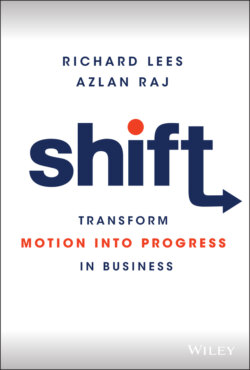Читать книгу Shift - Richard Lees - Страница 17
Chapter 1 The Peppered Moth: Why adaptation and evolution are essential in twenty-first-century business
Оглавление“Being a fish out of water is tough, but that's how you evolve.”
– Kumail Nanjiani
We'd like to begin by transporting you back to nineteenth-century England. The Industrial Revolution is taking hold, and the factories in the country's industrial heartlands are burning coal and pumping out black smoke. The residue from this smoke coats everything from buildings to trees.
Enter the peppered moth. In the 1800s, naturalists observed that peppered moths had evolved to fit in with this changed environment. The peppered moth is often found on the trunk of the silver birch tree and, therefore, its natural colouration is pale with darker spots, to match the colour of the tree's bark and camouflage it from predators. In highly industrialised areas of England, however, these moths were becoming darker in colour.
The pale-coloured moths stood out too much on the now-blackened bark of the trees and were therefore much easier for predators to spot. As a result, the pale moths were being eaten leaving the darker-coloured moths to survive and breed. Meanwhile, in regions where there was considerably less industrialisation the peppered moths remained pale in colour. They had no need to change their camouflage because their trees were not being darkened by soot.
This is probably one of the best documented stories of “adapt or die.” Peppered moths in industrialised areas adapted and evolved because those that didn't died. It really was that simple. To this day, it's still widely considered to be one of the best examples of Darwinian evolutionary theory.
What does your business have in common with the humble peppered moth? It too has to adapt or it will die. In the business world, just as in nature, our environment is continuously changing and that means we can never stop adapting to match it. There are many organisations in the world today that are undergoing a period of transformation because they have fallen behind and they need to catch up. What we're talking about here is not only transforming to catch up, but making adaptation and evolution a core part of your business so that you never fall behind again (or ideally that you never fall behind in the first place).
As a leader, it is your responsibility to determine the vision, paint that picture, and state your organisation's purpose so that you never fall behind again. Think about the Formula 1 race team principal who is continuously evolving the team's strategy and car to make sure that the team stays ahead of the pack. The principal's driver knows exactly what has to be done on the track, the crew knows exactly what's expected of it before, during, and after the race. This clear direction is what allows all on that team to function to their best ability.
However, a Formula 1 season is never just one race. Depending on performance throughout the season, not only will there be pivots and changes to the strategy set by the principal, but the end destination might also change. A string of poor results might suddenly see your driver and team aiming for third in the championship, rather than first, or a series of exceptional wins could put your team on course for winning the championship, where your initial goal at the start of the season was a top-five finish.
